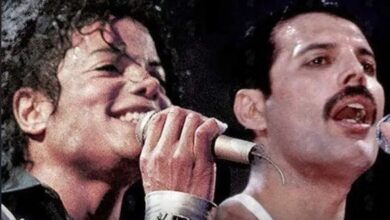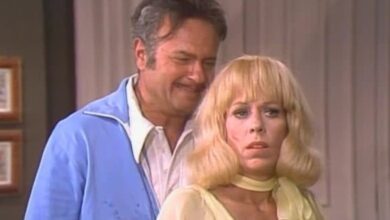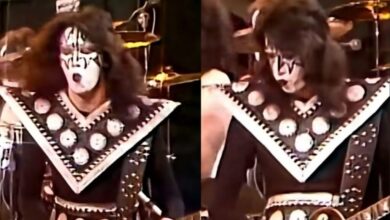K.T. Oslin’s ‘Do Ya’ Redefined 1980s Country, Infusing the Genre with Fearless Empowerment
When “Do Ya’” arrived in 1987, it did far more than add another catchy tune to country radio; it shifted the genre’s horizons by wrapping a toe-tapping beat around lyrics that felt honest, grown-up, and defiantly forward-looking. Listeners were immediately drawn to its confident groove and layered storytelling, and the single’s rapid rise on country playlists—and even a few pop-leaning stations—proved that audiences were hungry for songs unafraid to marry traditional narrative roots with a polished, contemporary sheen. That winning fusion signaled a new era where modern energy could coexist seamlessly with country authenticity.
Behind that game-changing sound stood K.T. Oslin, a Kentucky-born artist whose voice carried both the soft drawl of rural life and the steely edge of hard-earned experience. Having spent years navigating everything from small-town dance halls to New York theater stages, she brought a storyteller’s precision and a survivor’s insight into every line she wrote. Oslin had never been interested in fitting into Nashville’s prevailing mold; instead, she pressed her own narrative—one built on independence, wit, and a refusal to shy away from mature themes—giving her music an authenticity that resonated across boundaries.
The seed for “Do Ya’” sprouted from Oslin’s candid reflections on modern romance: questions of commitment, mutual respect, and the delicate dance between yearning and self-reliance. Alongside trusted co-writers, she distilled memories of bittersweet breakups and rediscovered self-worth into a storyline that balanced vulnerability with unmistakable strength. Those life-etched details—late-night phone calls that never came, promises that evaporated at sunrise—lent the song a conversational tone, as though Oslin were sharing coffee with a close friend and speaking hard truths that many people felt but rarely said aloud.
Capturing that conversational intimacy in the studio required careful craft. Working with producers who respected her vision, Oslin layered crisp acoustic strums, a warm bed of electric piano, and subtly modern synth accents over a tight rhythm section. Rather than bury her vocals beneath glossy effects, the engineers kept her voice front and center, allowing every raised eyebrow and sigh to land with maximum emotional weight. The result sounded simultaneously polished and personal—proof that cutting-edge technology could enhance, rather than overshadow, the storytelling essence of country music.
Upon hitting the airwaves, “Do Ya’” immediately turned heads. Reviewers praised its hook-laden chorus and frank depiction of grown-up love, while program directors noted how quickly listener requests piled up. In a matter of weeks, the song sprinted up Billboard’s Hot Country Singles chart, and its crossover flirtations with adult-contemporary stations hinted at broader commercial potential. Award-show nominations soon followed, highlighting Oslin’s unique ability to pen lyrics that were both radio-friendly and literary, both foot-stomping fun and quietly revolutionary.
Beyond sales and trophies, the track’s cultural resonance lay in its fearless embrace of female agency. At a time when country hits still leaned heavily on nostalgic domesticity, Oslin’s protagonist asked direct, unapologetic questions: Do you genuinely care, or are you simply passing through? Women across age groups heard their own private doubts echoed in that refrain, while men, too, recognized the authenticity of its relationship dynamics. In puncturing polite silence about desire and independence, “Do Ya’” opened conversational doors the genre had long kept shut.
The single’s runaway popularity flung open countless new avenues for Oslin. Overnight, she transformed from respected songwriter to in-demand headliner, fielding invitations to appear on national chat shows and to share festival stages with country’s marquee names. Audiences who had once discovered her via late-night radio now stood in sold-out arenas, belting the chorus back at her. That groundswell restored her faith in honest storytelling and confirmed that listeners craved music reflecting the messy, exhilarating truth of adult life.
“Do Ya’” also sparked a ripple of influence that radiated through Nashville’s writing rooms. Younger artists studying its structure realized they could fuse synth pads with steel guitar or pair conversational lyrics with chart-ready hooks without sacrificing credibility. By proving that innovation and tradition could share the same canvas, Oslin effectively handed the next generation a blueprint for pushing boundaries while honoring country’s narrative spine. Dozens of later hits—especially by women tackling mature perspectives—trace their lineage back to the daring sonic palette of this track.
Its elasticity soon inspired reinterpretations far beyond country’s borders. Folk duos slowed the tempo to spotlight the ache between each line, while pop-rock outfits brightened the groove with jangling guitars and airy harmonies. Each cover illuminated a different facet of the lyric: sometimes weary resignation, sometimes fierce resolve. Yet all versions shared a common reverence for Oslin’s original intent, revealing just how deftly she had distilled universal feelings into a melody sturdy enough to survive endless stylistic makeovers.
The late 1980s themselves were in flux, with shifting gender expectations and rapid technological advances reshaping everyday life. Within that swirl, “Do Ya’” served as both soundtrack and commentary, capturing the tension between longing for connection and insisting on self-respect. For Oslin, creating such a resonant song felt like personal vindication after years of industry gatekeeping; for audiences, hearing it felt like receiving permission to voice their own complicated hopes without apology.
Today the track’s imprint remains unmistakable. It still rotates on classic-country stations, spices up streaming playlists, and slips into movie soundtracks looking to evoke late-’80s authenticity. Fans share memories of first hearing that unmistakable chorus crackle through car speakers on summer road trips, while younger listeners discover the song and marvel that its themes feel freshly relevant. In an era of lightning-fast musical turnover, such longevity attests to the piece’s rare blend of immediacy and depth.
From a production standpoint, the song’s seamless weaving of acoustic textures with subtly future-leaning keyboard flourishes provided a template for later crossover hits. Artists like Shania Twain, Faith Hill, and even genre-blurring acts outside country would adopt similar strategies, proving that broad appeal need not come at the expense of storytelling integrity. In that sense, “Do Ya’” functioned as a quiet revolution, championing sonic experimentation while keeping one boot firmly planted on classic country soil.
After Oslin’s passing, industry tributes consistently spotlighted “Do Ya’” as a defining jewel in her crown. Critics revisiting her discography emphasized how the single encapsulated her signature blend of candor, humor, and melodic sophistication. Awards shows mounted retrospectives that paired archival footage with contemporary artists covering the tune, demonstrating its cross-generational pull and underscoring the way Oslin’s bold perspective continues to fertilize modern songwriting.
Because music’s true power lies in illuminating shared human experiences, the resonance of “Do Ya’” remains undimmed. Whenever that guitar intro rings out, listeners sense a voice willing to name desires—and doubts—that many still wrestle with. Its endurance proves that songs anchored in truth never really age; they simply wait for new ears to find them. K.T. Oslin’s masterpiece thus stands not merely as a celebrated milestone in country history but as an evergreen reminder that honest art always finds its audience.





